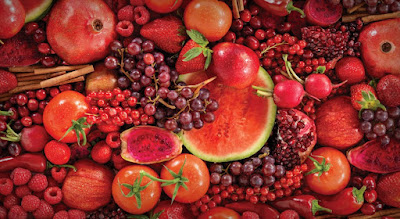
A nut is a simple dry fruit consisting of one or two edible
kernels inside a hard shell. Nuts include:
- Almonds
- Brazil
nuts
- cashew
nuts
- hazelnuts
- macadamias
- pecans
- pine
nuts
- pistachios
- walnuts
- peanuts
are legumes, they are classified as nuts due to their similar
characteristics to other tree nuts.
Benefits of nuts
Most nuts have very similar macronutrient (protein, carbohydrate,
and fat) profiles, but different types of nuts may have slightly different
micronutrient (vitamin and mineral) content.
Nuts help with:
- Fat absorption –
fats in nuts are not fully digested and absorbed by the body. When less
fats are absorbed it means that less energy from nuts is absorbed too.
- Hunger and fullness – nuts help to suppress our hunger. As a result,
food intake is reduced. This effect is due to the protein, fat, and fibre
content of nuts.
- Energy
expenditure – research suggests that nuts can increase the amount of
energy we burn. Energy we burn following a nut-enriched meal comes from
fat sources, meaning that we burn more and store less fat.
The effect of seeds on body weight has not been researched
extensively but is likely to be similar to nuts as they are also high in
protein, healthy fat and fibre.
Nuts and heart disease risk
Including nuts as part of your diet has been linked with a lower
risk of heart disease.
Although high in fats, nuts are good sources of healthy fats (such as
monounsaturated and polyunsaturated fats), and are low in (unhealthy) saturated
fats.
This combination of ‘good fats’, makes nuts heart healthy – they
help to reduce low density lipoprotein (LDL) cholesterol, (known as ‘bad’
cholesterol) in the body.
LDL cholesterol can add to the build-up of plaque (fatty
deposits) in your arteries, which can increase your risk of coronary heart
disease.
Nuts also help to maintain healthy blood vessels and blood
pressure (through their arginine content), and reduce inflammation in the body
as they are high in antioxidants.
Types of seeds
The nutrient profiles of seeds are also very similar to those of
nuts. Common seeds include:
- pumpkin
seeds
- flax
seeds
- sesame
seeds
- poppy
seeds
- sunflower
seeds
- psyllium
seeds
- chia
seeds.
Benefits of seeds
Most seeds are rich in:
- protein,
healthy fats, and fibre
- minerals
(such as magnesium, potassium, calcium, plant iron and zinc),
- vitamins
B1, B2, B3 and vitamin E.
Oily seeds also contain antioxidants that stop the fats from
going rancid too quickly.
Due to the unique nutrient profiles of nuts and seeds, they are
known to provide several health benefits, such as:
- ·
helping to maintain
your weight
- ·
reducing your heart
disease risk
- ·
reducing your diabetes
risk.



